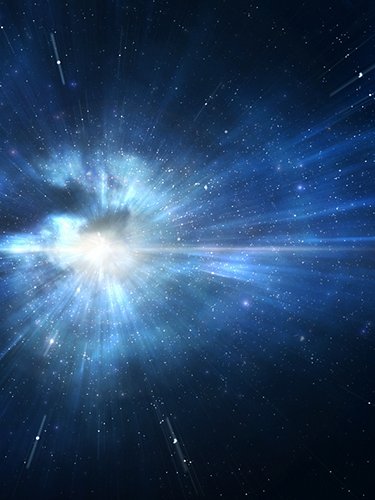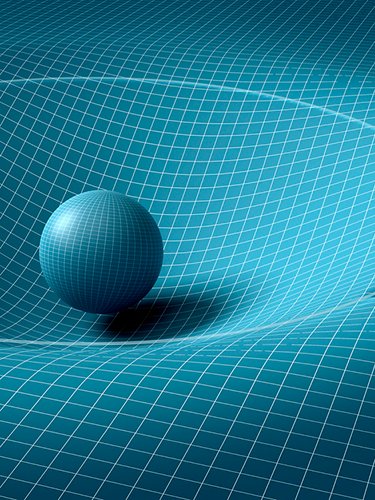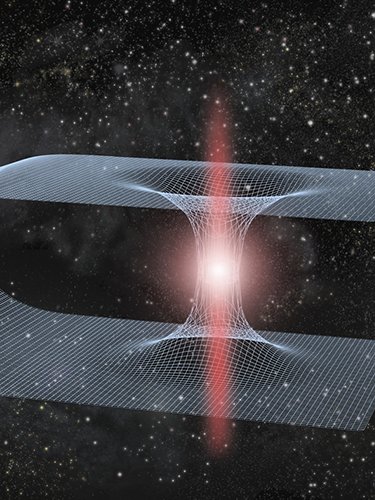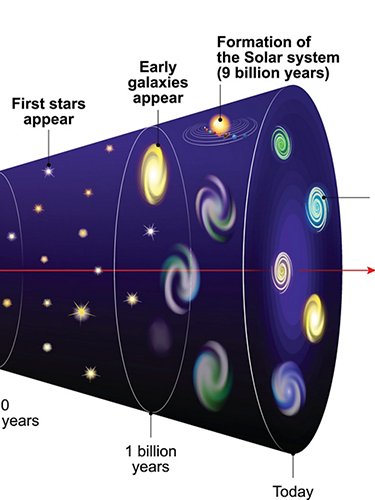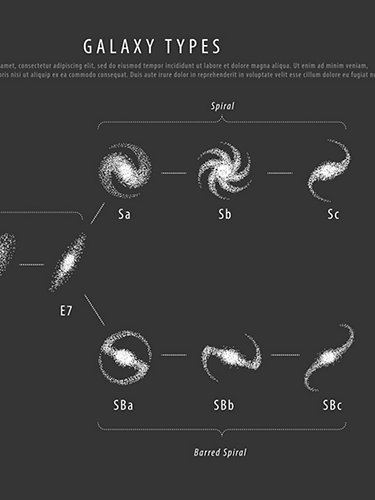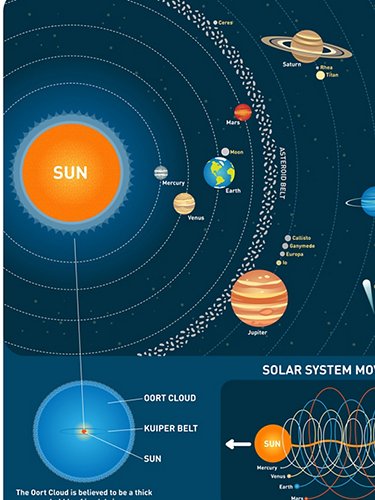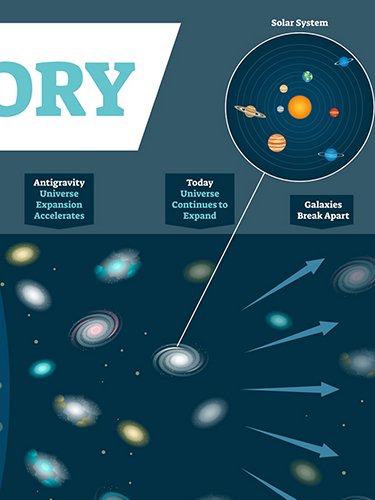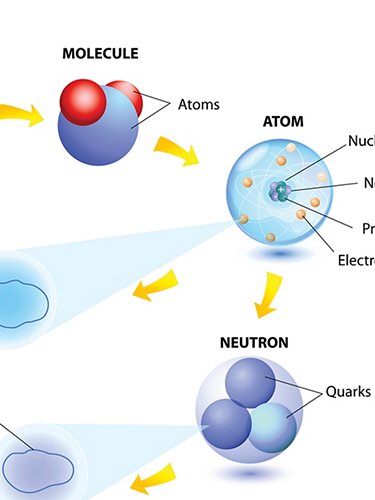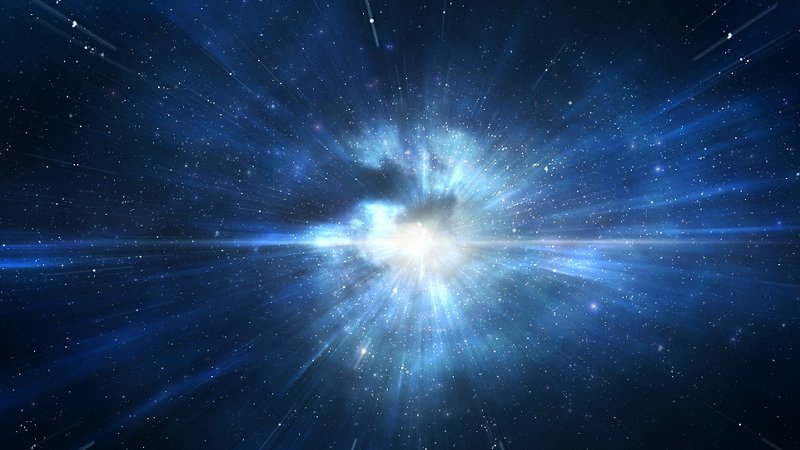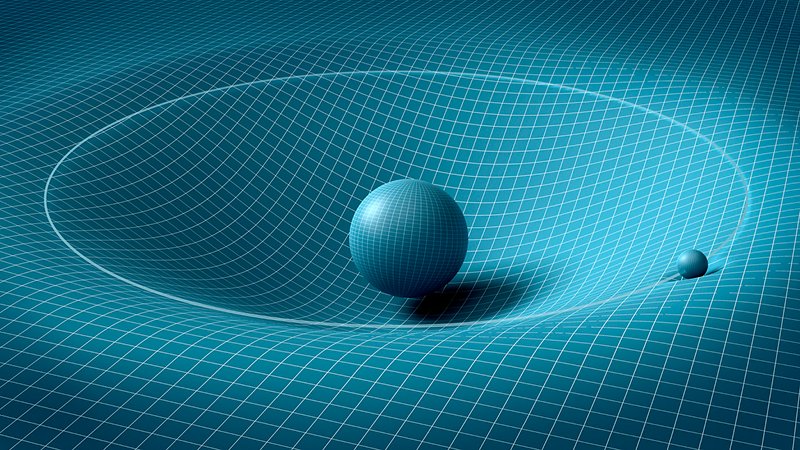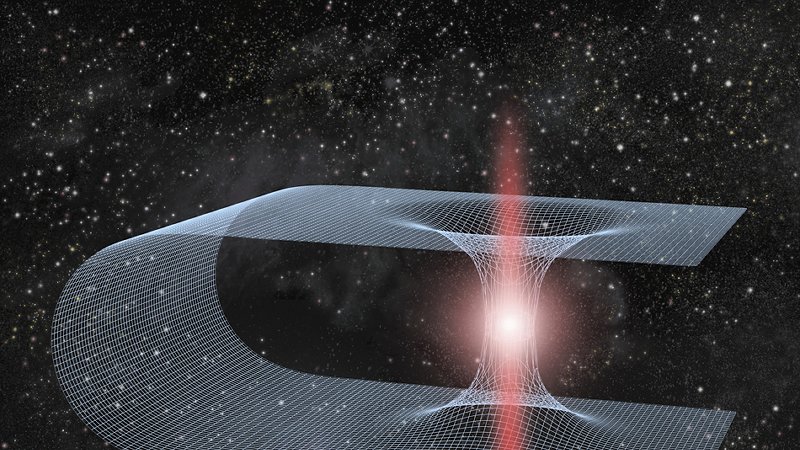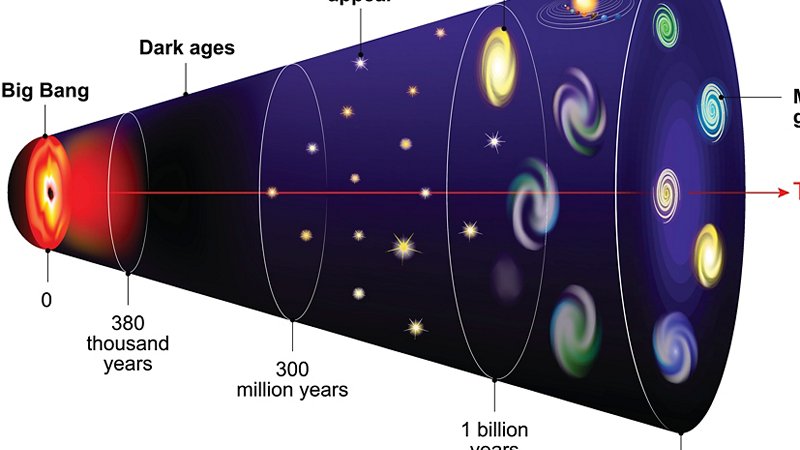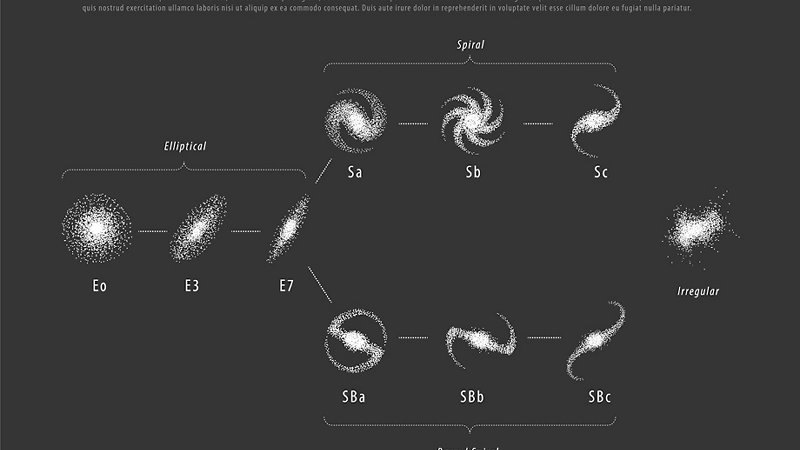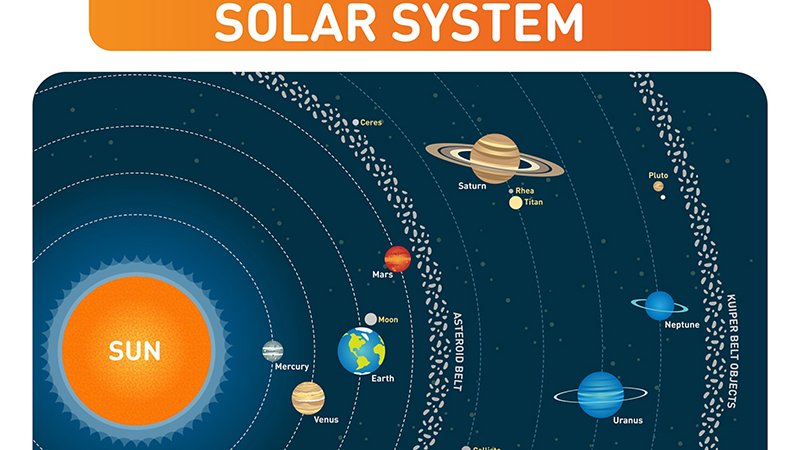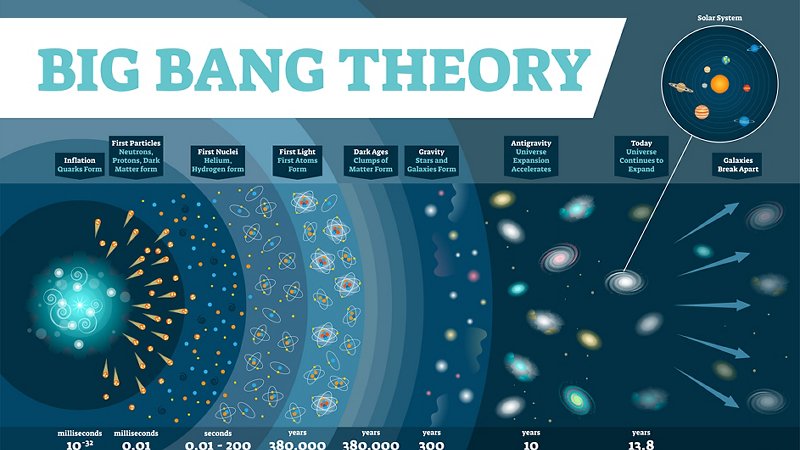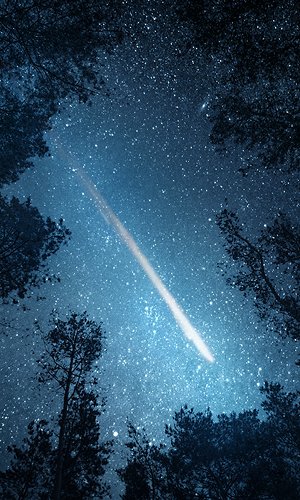If the universe shows us an expansive motion, it is natural to suppose that, if we would be able to rewind at the same speed the tape of this expansion, all the matter that composes the Universe would come back to form the first cluster, very dense and really hot. This experiment of thought encouraged, in the Forties, the physicist G. Gamow to elaborate the Big Bang or standard model theory. According to his theory, about 15-20 billions of years ago, the Universe was characterized by an incredibly high temperature and density state, concentrated in a very small place. In an infinitesimal time, it started to expand itself to an enormous speed, decreasing temperature and density, until it reached the current dimensions and aspect.
This model allows to explain several observations, like the universal abundance of lighter atomic nuclei (hydrogen, helium, deuterium, lithium) and the existence of a cosmic microwave background radiation.

